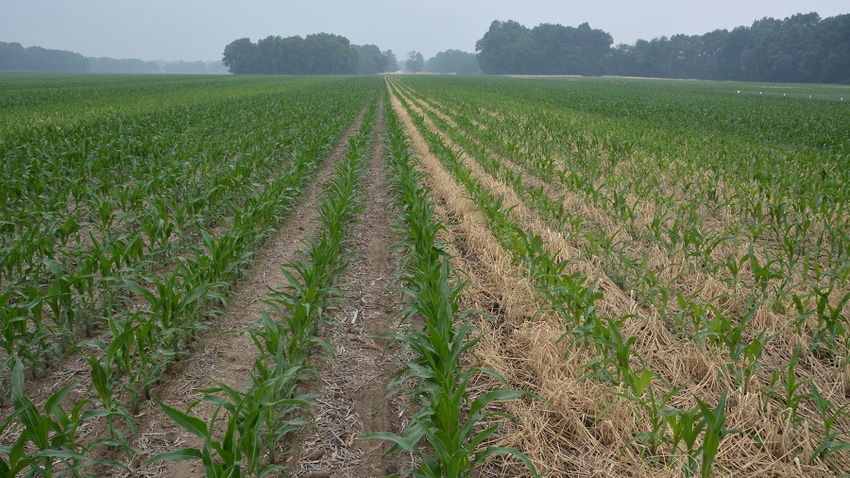
Life taught me to call a spade a spade. Ignoring facts simply prolongs confrontations and threatens to erode credibility. So, here goes. The truth is that some people who grew crops, particularly corn, after cereal rye in 2023 ran into serious issues. Some stands were very slow to take off, setting the crop back. I have pictures to prove it.
Does that mean you should abandon cover crops because of a challenging year? Absolutely not, as I see it. Should you perhaps rethink choices for cover crops and make yourself more aware of potential risks? Again, absolutely yes.
On the flip side, if you’re a super-supporter of cover crops, maybe this is a wake-up call for you too. Using cover crops is a tool, but it is not a be-all, end-all perfect solution. There will be challenges, as with any other system. Denying those challenges exist doesn’t help sell cover crops and promote soil conservation. Being open, honest and understanding is much more effective.
Decades ago, in the early days of no-till, I visited many farmers, interviewing them about how no-till was working so far. Occasionally, a staff member of the Natural Resources Conservation Service or a district supervisor or soil conservation technician went along. On one visit, it became difficult to complete the interview. If the farmer even hinted at an issue with no-till, the professional jumped in, insinuating that it wasn’t really a problem.
Yes, there are problems occasionally with no-till and cover crops. After all, we’ve been tilling soil for centuries, and there are still challenges with tillage, too. Identify challenges, address them, move on.
Cover crops in 2023
Here are observations so far this year from seeing fields and talking with people:
Cover crops dried out soils. Especially cereal rye, if allowed to grow and planted into, wicked out moisture in this unusually dry spring. Even if seedlings germinated, they often got a slow start compared to crops growing without cover.
Consider other covers besides cereal rye. In fact, many people don’t recommend cereal rye ahead of corn. Instead, they suggest cover crop mixes with legumes and winter-kill oats, or perhaps annual ryegrass. Even in normal years, cereal rye produces so much biomass that it can tie up nitrogen for corn early in the season. And yes, even some soybean stands planted into cereal rye, which works in normal years, were held back this year due to lack of moisture.
Talk to those who use covers. Among those who do plant corn after cereal rye, making sure they apply an ample amount of nitrogen with the planter has become a standard practice. Both farmers and researchers find that adding nitrogen as starter can offset some effect from tying up nitrogen in residue.
Season isn’t over yet. While crops planted without cover appear to have an advantage so far in very dry areas, the book is still open on 2023. Will a dry spell develop again late, and fields with residue be better able to handle it? Or will slower-growing corn catch a more favorable week for pollination? The smart money is on waiting until the season plays out, and then assessing and adjusting approaches if necessary.
About the Author(s)
You May Also Like




